There is a general tendency to think of arthritis as a condition of old age. But is it? So, what is arthritis?
It is a condition where the joint of a person or animal such as the knee, elbow, fingers becomes damaged causing difficulty and pain with movement.
Arthritis can however affect anyone of any age, gender, or race and surprisingly even babies as young as age six months can develop an arthritic condition although It is generally more common in older people.
This article reviews some common forms of arthritis in seniors, causes, what is arthritis pain, symptoms, and management.
Arthritis 101
What is Arthritis Pain?
Arthritis means inflammation of bone joints. It causes pain, swelling, and stiffness.

A joint is a space between two bones, usually filled with a shock absorber-like layer of cartilage and connective tissue which allows for flexibility and ease of joint movement.
As many people age, the cartilage layer can become thin and frayed over time due to “wear and tear”.
This is understandable because bone movement grinding over the cartilage layer has been going on continuously since birth.
Consequently, the joints may start to feel stiff because the “shock absorber” layer of cartilage and connective tissue become thinner and thinner making movement more difficult and uncomfortable.
What is Arthritis? – How it Develops
Further progression of this thinning may now cause the bones to start to rub against each other, This can cause considerable and sometimes excruciating pain.
Many seniors may begin to experience early signs of arthritis somewhere between age 50 and 60 which is why arthritis is often associated with aging.
According to Wikipedia, there are more than 100 different kinds of arthritis. The four most common kinds encountered in seniors and the elderly are osteoarthritis, rheumatoid arthritis, gout and psoriatic arthritis.
Now that you have a basic understanding of arthritis, continue reading BUT, make an appointment with your doctor or healthcare professional if you have any persistent discomfort and swelling in your joints.
What is Arthritis? – Osteoarthritis
This is the most common type of arthritis. It is localized and characterized by joint pain in the commonly used weight-bearing areas of the body such as your hips, knees, feet, and spine.
While it can also affect the joints of your fingers and thumb and the joint at the base of your big toe, this condition is usually related to the natural “wear and tear” on the joints over time more common in older adults.
The “wear and tear” motion causes a thinning of the cushioning cartilage between the bones and can result in inflammation, discomfort, and pain. Specialized orthotics, osteoarthritis shoes, or custom orthopedic shoes can however provide some relief.
Generally, osteoarthritis does not affect children, but it can develop at any age following sports injuries and broken bones.
Common Symptoms of Osteoarthritis
- Inability to move a joint the normal way
- Joint pain or tenderness that is constant or that comes and goes
- Unexplainable weakness and joint pain – You just don’t feel right
- Sleep problems
- Morning stiffness lasting 30 minutes or less

Risk Factors for Osteoarthritis
Risks for osteoarthritis are age, gender, obesity, race, smoking (lifestyle), trauma and genetics.
Weight
Obesity is widely acknowledged as a risk factor for both occurrence and progression of osteoarthritis. Losing at least 10 % of body weight, along with exercise, is recognized as a cornerstone in the management of obese patients with osteoarthritis.
This can significantly improve symptoms, provide pain relief, physical function and health-related quality of life.
If you are obese, the extra weight can stress your joints and create arthritis pain. A good healthy weight, exercising and eating right help manage the condition (Bliddal et al 2014).
Genetics
Plays an important role in the development of arthritis. Unfortunately, since these were the genes you inherited from your mother and father, there is nothing you can do to change this!
However, a healthy lifestyle can lower the risk of arthritic conditions in your body before it develops. You probably wish you knew this a while back! nevertheless, a healthy lifestyle does wonders at any age!
Gender and Race
Women are more at risk than men for getting different kinds of arthritis pain, probably because of the physiological changes they experience.
African Americans are more likely to develop lupus (a form of arthritis) while Caucasians have a higher risk of developing rheumatoid arthritis.
Lupus is two to three times more prevalent among women of color—African Americans, Hispanics/Latinos, Asians, Native Americans, Alaska Natives, Native Hawaiians and other Pacific Islanders—than among Caucasian women.
A Lupus Foundation of America funded study found that overall, lupus was among the top 20 leading causes of death in females ages 5-64 ((National Resource Center on Lupus 2016).
Treatment
There is no cure for osteoarthritis, although the pain can be effectively managed through the use of knee braces, lifestyle changes, dietary changes, memory foam osteoarthritis shoes, use of foot massagers, special walking canes, and joint supplements.
Managing Osteoarthritis
Although there are lots of products you can buy to manage arthritis – joint wraps, foot wraps, specialized shoes and braces, however, not all gel packs and braces are of similar quality and durability.
I have tried some of them and find that cheap is not always the best, neither is super expensive! Comfort and durability should be the criteria used to select a product that is affordable, suits your budget, and that will not fall apart or slacken after a few uses.
Some of the more popular products are identified here.
Comfort Products
To give you an idea of some of these arthritis comfort product wraps for the joint, foot and neck CHECK the images below for more details and prices:
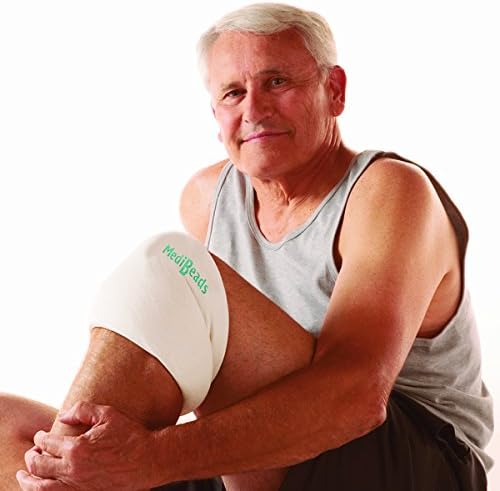
MEDIBEADS Arthritis Joint Wrap – AMAZON

MEDIBEADS Arthritis Neck Rest – AMAZON
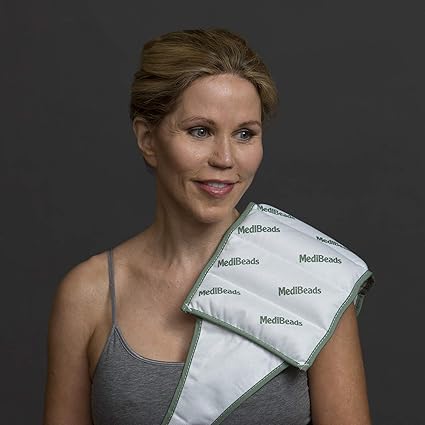
MEDIBEADS Arthritis Therapy Wrap – AMAZON
Joint Supplements
There are several joint supplements (refer to a previous article The Causes of Osteoporosis – Am I A High Risk? in the market, many of which claim to be the ultimate solution to joint pain.
Several of them do not work efficiently for a variety of reasons. Some contain cheap synthetic fillers to cut costs so their manufacturer can market cheaper products.
On a cautionary note, it is highly recommended that you consult with your doctor or healthcare provider before embarking on the use of supplements as they may suggest that you initially start with pain relievers.
Joint supplements may be ineffective. The question is Why? Consumer Health (2020) and Arnow (2012) provide some scientific insight which are summarized below:
- Joint supplements usually contain most – if not all the following essential ingredients – Glucosamine, Chondroitin sulfate, Boswellia Extract, Turmeric, Bromelain, Quercetin, Methionine and MSM
- Vitamins C & D, Omega 3 Fish oil and CMO – a natural fatty acid are beneficial for joint health.
- However, some supplements contain binders, fillers and artificial colors which can affect efficacy.
- A 90-day stress free money back guarantee from the manufacturer – at the minimum shows some level of the integrity of the product. An absence may indicate a lower quality product
- A personal deduction by the author is that perhaps the degree of inflammation and severity of the cartilage damage in the joint differs among different individuals and may be contributing factors.
What is Arthritis? – Rheumatoid Arthritis
RA called Rheumatoid arthritis is a systemic autoimmune disease typified by a chronic inflammatory disorder. It is called the “confused immune” effect because the body attacks its own body tissue and the condition can appear anywhere over the body.
This can also develop across a very wide spectrum of individuals – babies, older children, menopausal women, seniors, and the elderly.
The condition tends to affect the smaller joints first in the early stages – especially the joints that attach your fingers to your hands and your toes to your feet. As it progresses, symptoms commonly affect the hands, wrists, ankles, shoulders, and knees.
It affects the lining of your joints, causing a painful swelling that can eventually result in bone erosion and joint deformity. Symptoms can be gradual or appear suddenly.
Note, symptoms can differ in severity and can come (“flare”) and go (“remission”). Some people also experience lumps on the skin called rheumatoid nodules.
Common Symptoms of Rheumatoid Arthritis
- Fatigue
- Fever and loss of appetite.
- Early morning stiffness in the joints or following periods of inactivity
- Swollen joints that feel tender to the touch
- Decrease in the range of motion
- Numbness and tingling due to pressure on the nerves
- Squeaking of the joints (Petriangelo 2020)
Risk Factors for Rheumatoid Arthritis
People with RA are also at a higher risk for developing other chronic diseases such as heart disease and diabetes. The condition can begin at any age, but the likelihood increases with age.
The onset of RA is highest among adults in their 60s, and new cases of RA are typically 50-60% higher in women than men (Centers for Disease Control & Prevention 2020).
Treatment
There is no known cause for rheumatoid arthritis and the swelling and inflammation can damage a wide range of organs – skin, eyes, lungs, heart and blood vessels (AOTC 2017), and because the condition is systemic, it usually develops along with a high fever and rashes.
The strange thing about rheumatoid arthritis is that between 40-50% of people affected also experience signs and symptoms that do not involve the joints.
These include the eyes, heart, kidneys, salivary glands, bone marrow, lungs, skin, nerve tissues and blood vessels (Mayo Clinic 2019, Pietrangelo 2020).
You can do some simple home stretches to strengthen creaky joints. Try out these exercises to prevent arthritis pain.
Management
The care products shown below include compression and easy grip gloves which provide relief to stiff hands and fingers.
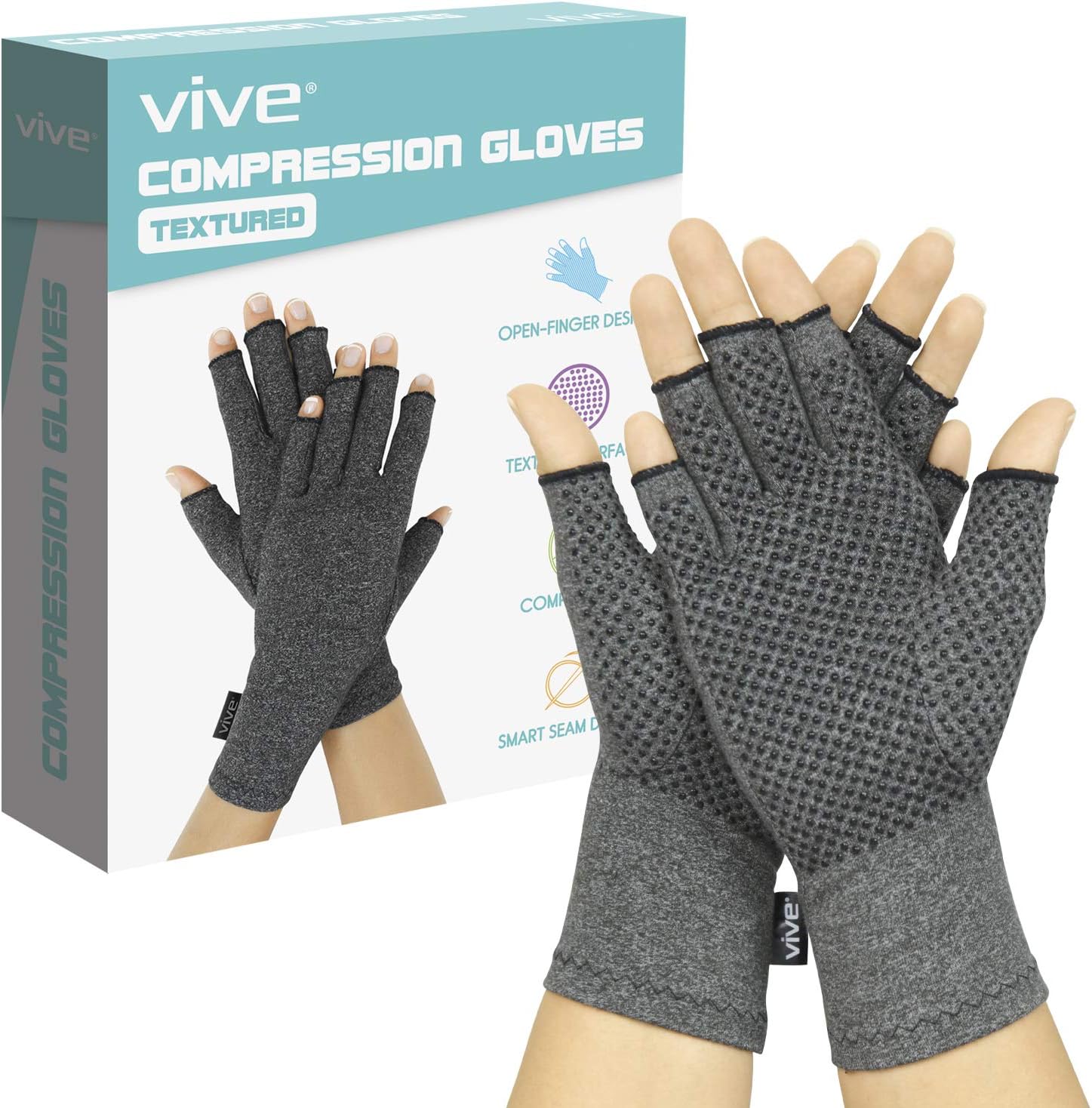
VIVE Arthritis Gloves with Grips – AMAZON
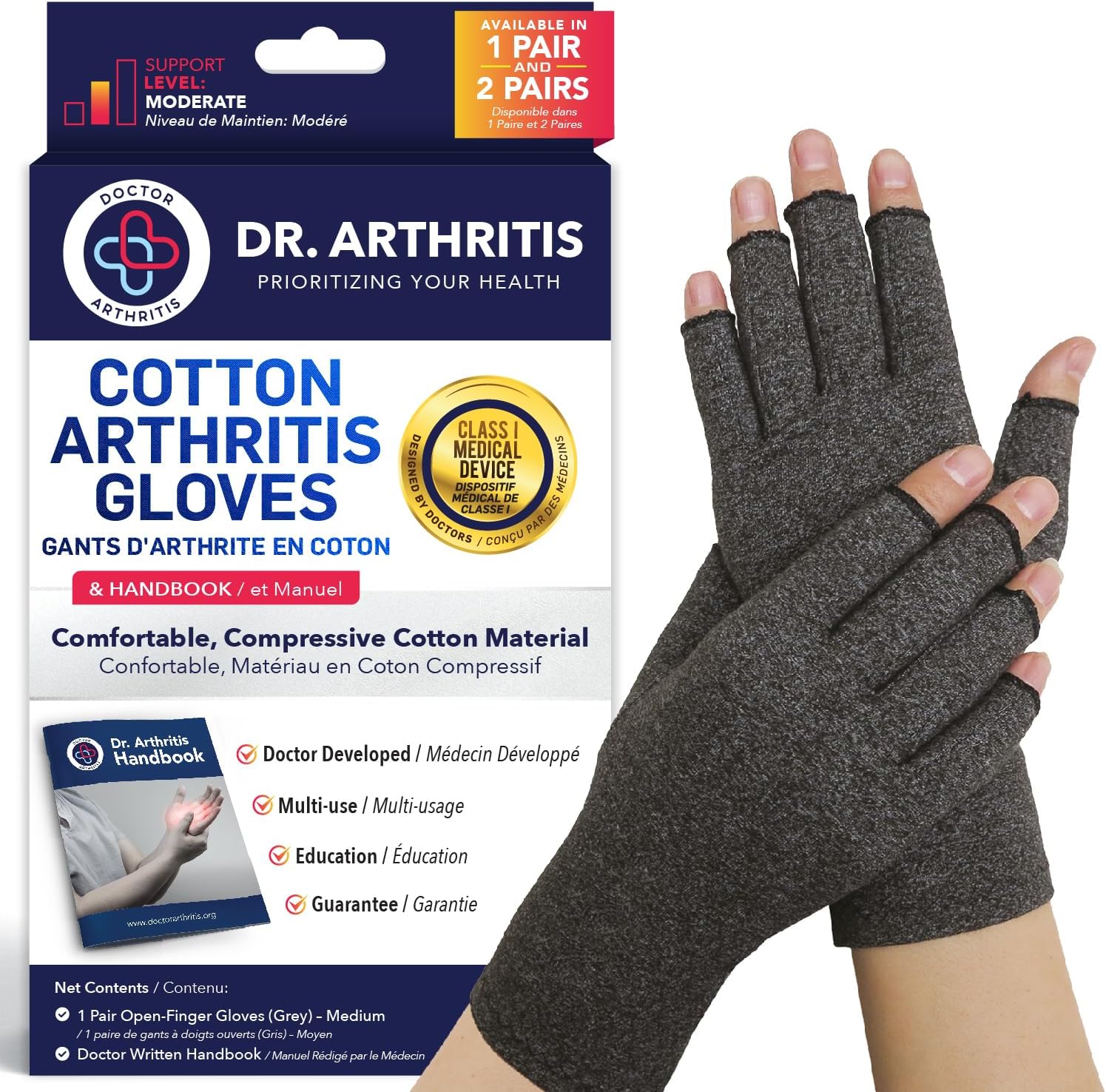
DR ARTHRITIS STORE Arthritis Gloves – AMAZON
What is Arthritis Pain? – Gout
Gout is defined by Wikipedia as a form of inflammatory arthritis that causes recurring attacks of a red, tender, hot, and swollen joint. In most cases, it affects the joint at the base of the big toe.
An attack of gout can come on quite suddenly, with the throbbing pain quickly reaching maximal intensity in less than 12 hours seriously affecting sleep patterns.
Risk Factors
Older men are more commonly affected. Gout occurs more commonly in those who regularly drink beer, sugar-sweetened beverages or who eat foods such as shellfish, anchovies or liver (all high in purines), or who are overweight.
It affects about 1 to 2% of the Western population at some point in their lives.
Treatment of Gout
Gout treatment includes anti-inflammatory medications (NSAIDs, colchicine, steroids), uric acid-lowering drugs (allopurinol, febuxostat), hydration, dietary changes (avoiding purine-rich foods), and lifestyle adjustments like weight management and reduced alcohol intake to prevent flare-ups and complications.
Managing Gout
Manage gout by staying hydrated, avoiding purine-rich foods (red meat, seafood), limiting alcohol, maintaining a healthy weight, taking prescribed medications, and using ice or NSAIDs for pain relief.
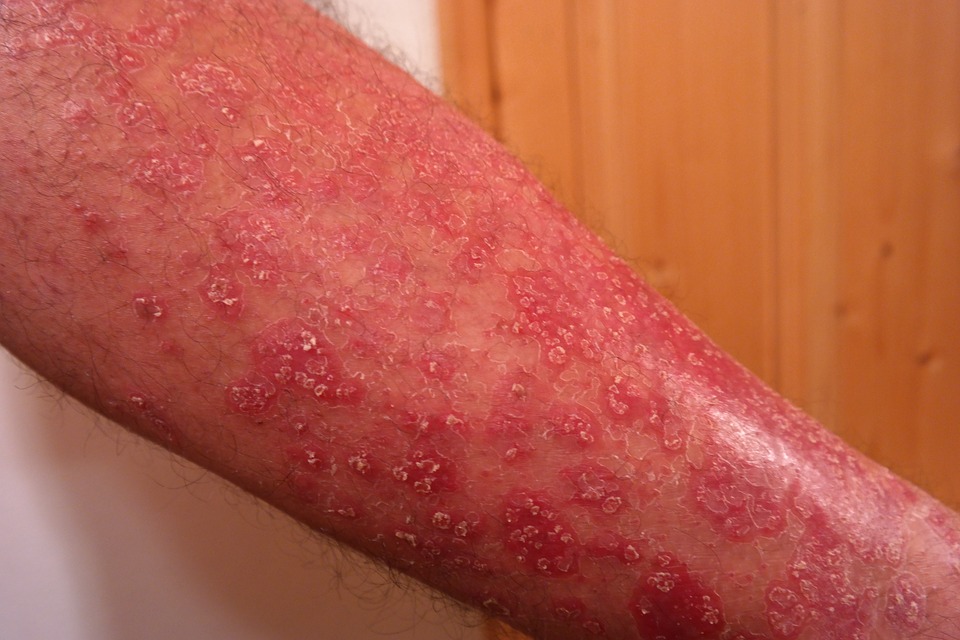
What is Arthritis? – Psoriatic Arthritis
Psoriatic arthritis occurs when people with psoriasis have inflammation of the joints and the skin.
Its cause is believed to be due to an autoimmune condition, and as occurs in rheumatoid arthritis, the body mistakenly attacks healthy joints causing inflammation, discomfort and pain.
The risk factors for psoriatic arthritis include an age range between 30 – 50 years and an inherited genetic pre-disposition (Mayo Clinic 2019)
The condition presents as patches of red or white areas of inflamed skin, typically around the elbows, knees and scalp, although there may be a wide variety of additional symptoms.
Treatment
Psoriatic arthritis treatment includes NSAIDs, DMARDs (methotrexate), biologics, corticosteroids, physical therapy, and lifestyle changes like exercise, stress management, and a healthy diet to reduce inflammation and joint damage.
Conclusion – What is Arthritis?
This article addresses the question “What is arthritis?” and focuses primarily on how it may affect seniors. Arthritis presents difficulties for sufferers and affects the quality of life.
Many forms affect the feet and make walking painful. Fortunately, aside from prescription medication, there are a wide range of extra wide and extra deep shoes, socks, orthotics, weighted blankets and other products that can provide relief while managing arthritis.
Also check “How to Use Healing Benefits of Essential Oils for Arthritis Pain“. These products are reviewed in upcoming articles.
Remember to make an appointment with your doctor or healthcare professional if you have any persistent discomfort and swelling in any of your joints.
Share your experiences under the comments below.
Related Articles
- The Thyroid and Autoimmune Disease – Helpful Facts
- Why is Arthritis Painful? – How to Know Different Skin Types
- Arthritis and Insomnia – A Sure Recipe for Senior Falls
- How to Treat Arthritis and Sleep Problems – The Connection
- The Offset Handle Walking Cane – Best for Arthritis
- How to Use The Power of 5 Herbal Teas for Arthritis Relief
- Weighted Blankets for Seniors – Are Helpful for Insomnia?
FAQs for What is Arthritis Pain?
What is arthritis pain like?
Arthritis pain feels like aching, stiffness, swelling, or burning in the joints, often worsening with movement or after rest, and can range from mild discomfort to severe pain.
What is arthritis?
Arthritis is caused by cartilage breakdown, autoimmune disorders, infections, or injuries. Risk factors include age, genetics, obesity, and joint overuse.
What is arthritis pain like in its early stages?
Early signs of arthritis include joint pain, stiffness, swelling, reduced mobility, and warmth around the joints, often worsening in the morning or after inactivity.
Can arthritis be cured?
Arthritis has no cure, but treatments like medications, exercise, weight management, and lifestyle changes help reduce symptoms and improve joint function.
References
Gout (2020) https://en.wikipedia.org/wiki/Gout
Preventing Arthritis Pain (2020) https://www.tylenol.ca/symptoms/adult/arthritis/preventing-arthritis-pain
Arthritis Osteoporosis Treatment Centre AOTC (2017) Causes of Three Common Types of Arthritis https://arthritisjax.com/blog/category/arthritis/
Bliddal et al (2014) Osteoarthritis, obesity and weight loss: evidence, hypotheses and horizons – a scoping review Obes Rev. 15(7): 578–586
https://www.ncbi.nlm.nih.gov/pmc/articles/PMC4238740/#:~:text=Weight loss can prevent the onset of osteoarthritis, relieve, loss reduces the risk for OA in women
Pietrangelo, A (2020) Early Signs of Rheumatoid Arthritis https://www.healthline.com/health/early-signs-rheumatoid-arthritis
Mayo Clinic (2019) Rheumatoid Arthritis https://www.healthline.com/health/early-signs-rheumatoid-arthritis
Consumer Health (2020) Joint Supplements: Benefits, Uses, Side Effects and Scams. https://consumershealth.org/joint-supplements-guide/
Yen E, & Singh R (2018) Brief Report: Lupus-An Unrecognized Leading Cause of Death in Young Females: A Population-Based Study Using Nationwide Death Certificates, 2000-2015. Arthritis & Rheumatology. 70(8):1251-1255.
National Resource Center on Lupus (2016) Lupus Facts and Statistics. Who does it affect? https://www.lupus.org/resources/lupus-facts-and-statistics

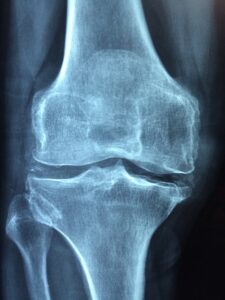
Thanks for this informative article Cici. It is good to understand these changes that may occur as we age. I currently do not suffer from any form of arthritis but am definitely concerned that genetics may increase my chances. I remember the deformity of my grandmother’s fingers and toes and the pain she was in at times, especially when the weather was poor. My father also suffered from periods of gout and that caused him excruciating pain. Yes, I have had several broken bones throughout the years so I am definitely concerned. I currently am quite active. I run daily, participate in yoga, Pilates, and Jui Jitsu, and my husband and I enjoy sailing our 26′ sailboat(we are the crew) and hiking adventures. I would be devastated if I couldn’t continue exploring this great planet. What can I do now (age 55) to help prevent developing arthritis in the future?
Hi Deb,
You are already doing all the right things to keep arthritis at bay as you are leading an active lifestyle. Taking recommended doses of Ca, Vitamin D, Vitamin C. Omega 3 Fish oil and CMO as stated in the article are also helpful
As a senior, well over 55, I have some pain of arthritis from a broken bone in my foot. It was suggested that I take Tumeric daily to help with pain and swelling for arthritis that would develop around the metal and hardware used to put my foot back together.
It has been three years and it seems to have helped as I can do most things except to run without a lot of pain.
Taking a supplement is a great way to keep the pain and swelling of arthritis at bay. I see that Tumeric is in some of the things that you recommend, is it better to get a supplement or just the Tumeric that I take now?
John
Hi John,
Taking fresh (or powdered) turmeric daily is very beneficial for arthritic inflammation and pain. I take this myself, but bear in mind that some preparation of fresh turmeric is necessary. Some folks don’t like to do the prep work, plus having the turmeric stain everything it comes in contact with. Supplements on the other hand are loved for the ready availability and exact dose – just pop the pill in your mouth and swallow with water. Furthermore, they are easy to take on vacation with you.
Hi Ceci,
Your article about arthritis is very informative. We only hear older people could get it, and I was shocked to learn that children could be affected too, causing permanent damage to the affected joint or joints.
My friend, who was quite active, just recently told me about her struggle with this disease. And she was looking for some factors which caused it. In your article, you said it could be weight or genetics. She’ has some changes and feels a little bit better. I looked at the product you have recommended, “Turmeric Curcumin with Bioperine”. There are quite good reviews about this product. I will pass this information on to my friend.
What can we do to prevent arthritis? Have you got any information? Thank you.
Preventative measures for arthritis include leading an active lifestyle, taking recommended doses of Ca, Vitamin D, Vitamin C. Omega 3 Fish oil and CMO as stated in the article are also helpful
Hi Ceci,
This was very well explained. It is the first time that I actually begin to understand more about arthritis. I did not know that it could also affect younger ages, although I knew of some cases where young people had arthritis. I always related it to a senior condition. I also didn’t know that there were different types of arthritis.
I know someone who has gout and like you described in this article, he sometimes gets sudden, intense pain. I am sure that he doesn’t know what foods should be prevented. Will it make a difference for him if he stops eating the foods that you mentioned, even if he has had gout for years?
I’m also wondering why women of color are more prone to getting lupus. Do you know why this might be?
Hello Christine,
Quite honestly, I can only imagine that if your friend who has had gout for so many years stops eating some of the recommended foods, he should have some relief. Consult with a doctor though.
Genetics and hormones are the reason why women of color are more prone to getting lupus.
Ceci
Excellent article as I’ have been in health and fitness my whole life but never spent a lot of time learning about arthritis. I actually had no idea about how many types of arthritis there is!
I’m beginning to focus on more health related items outside of just exercise and diet and I’m glad to have found your article. It’s not surprising that obesity is a contributor to arthritis but I wasn’t aware of how major of an impact genetics plays.
There is always something to learn about about changes in the body as we age. Better to learn about them early on and find out how we can improve our quality of living even as these changes happen.
Ceci